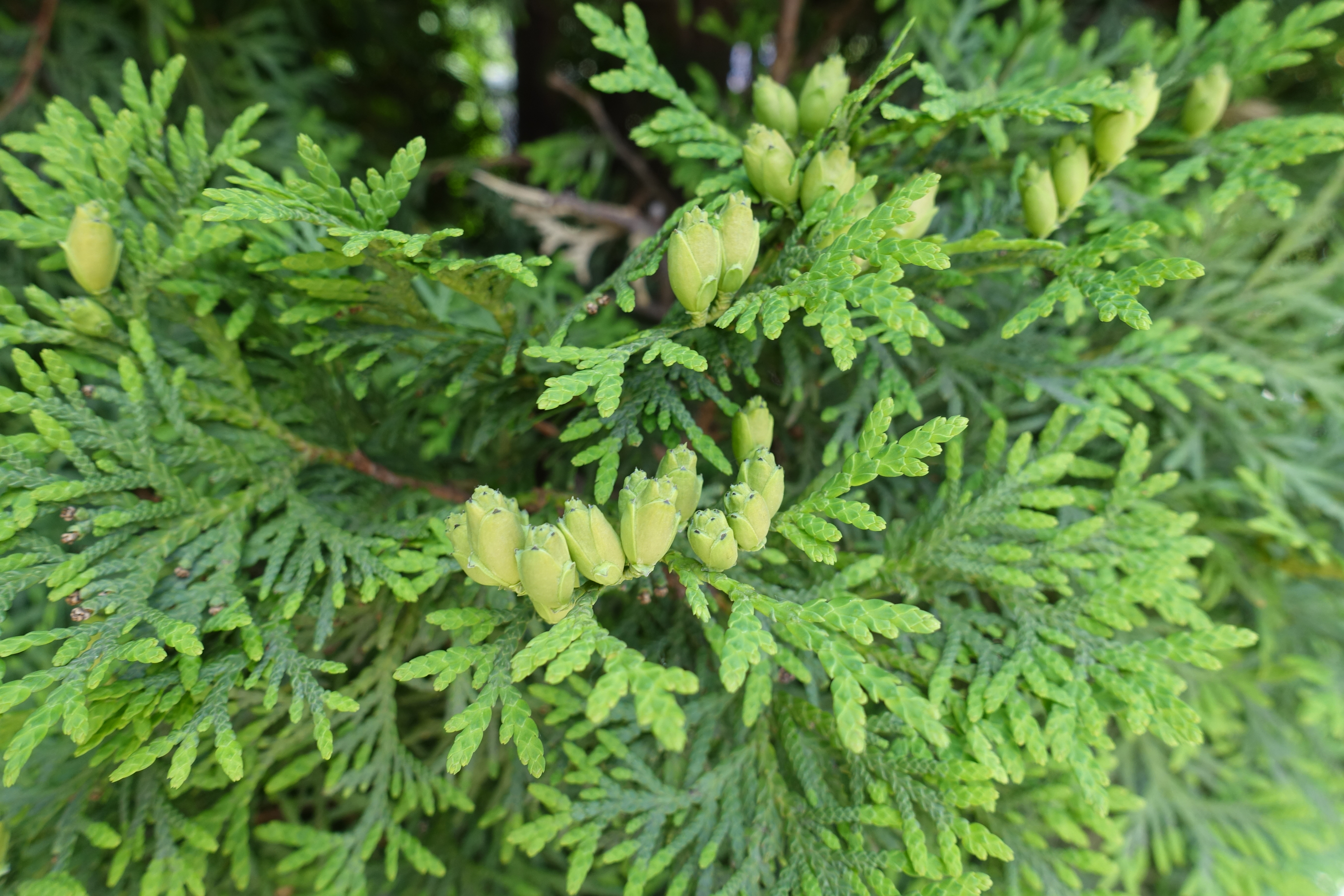Northern white-cedar
(Thuja occidentalis)

Description
Thuja occidentalis, also known as northern white-cedar, eastern white-cedar, or arborvitae, is an evergreen coniferous tree, in the cypress family Cupressaceae, which is native to eastern Canada and much of the north-central and northeastern United States. It is widely cultivated as an ornamental plant. Its additional common names include swamp cedar, American arborvitae, and eastern arborvitae. The name arborvitae is particularly used in the horticultural trade in the United States; it is Latin for 'tree of life' due to the supposed medicinal properties of the sap, bark, and twigs. It is sometimes called white-cedar (hyphenated) or whitecedar (one word) to distinguish it from Cedrus, a distantly related genus of trees also known as cedars. Unlike the closely related western red cedar (Thuja plicata), northern white cedar is only a small or medium-sized tree, growing to a height of 15 m (49 ft) tall with a 0.9 m (3.0 ft) trunk diameter, exceptionally to 38 metres (125 ft) tall and 1.8 metres (5.9 ft) diameter. The tree is often stunted or prostrate in less favorable locations. The bark is red-brown, furrowed and peels in narrow, longitudinal strips. Northern white cedar has fan-like branches and scaly leaves. The foliage forms in flat sprays with scale-like leaves 3–5 millimetres (1⁄8–3⁄16 in) long. The seed cones are slender, yellow-green, ripening to brown, 9–14 millimetres (3⁄8–9⁄16 in) long and 4–5 millimetres (5⁄32–3⁄16 in) broad, with six to eight overlapping scales. They contain about eight seeds each. The branches may take root if the tree falls. Northern white cedar is native to an area in the southern part of eastern Canada and the adjacent part of the northern United States. It extends from southeastern Manitoba east throughout the Great Lakes region and into Ontario, Québec, New York, Vermont, New Hampshire, Maine, Prince Edward Island, New Brunswick, and Nova Scotia. Isolated populations occur in west-central Manitoba, and to the south in Massachusetts, Connecticut, Ohio, and Illinois and in the Appalachian Mountains of Kentucky, Tennessee, North Carolina, Pennsylvania, Maryland, Virginia, and West Virginia. In Canada, its range reaches the Arctic treeline and the southern tip of Hudson Bay. It grows mainly in places with cooler summers, with a typical temperature of 16 to 22 °C (61 to 72 °F) in July, and a shorter growing season, from 90 to 180 days.
Taxonomic tree:







